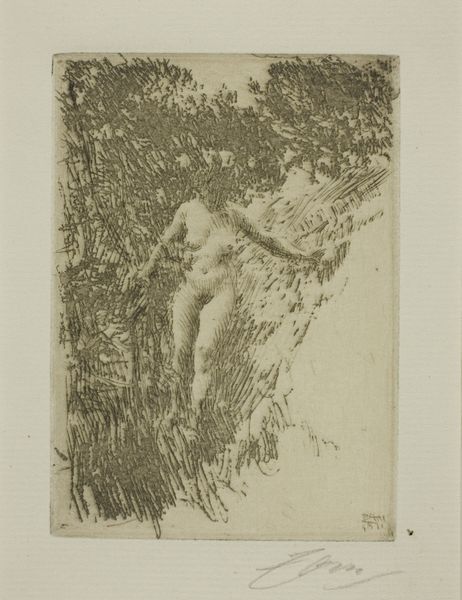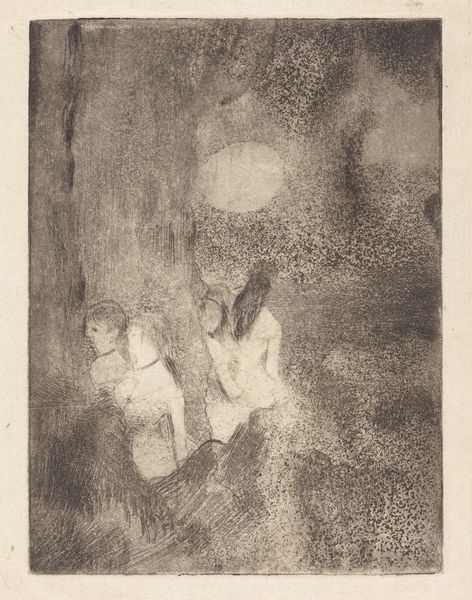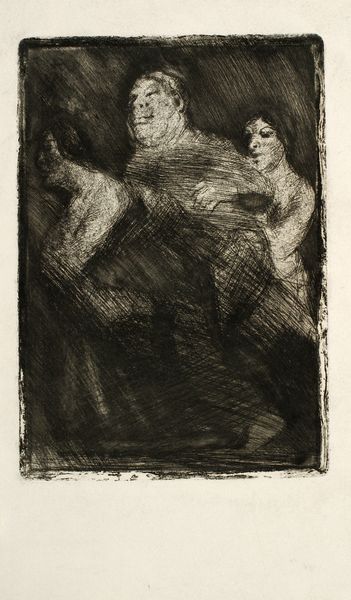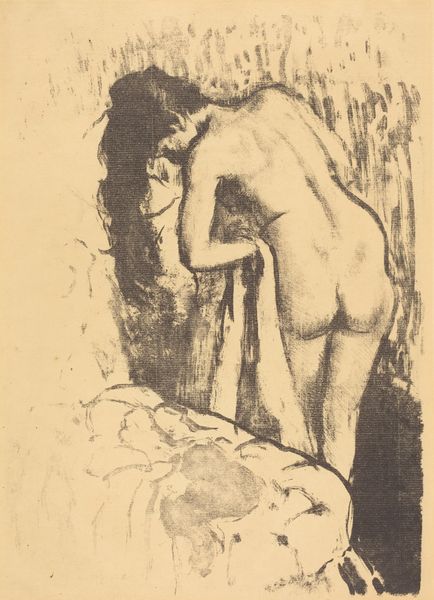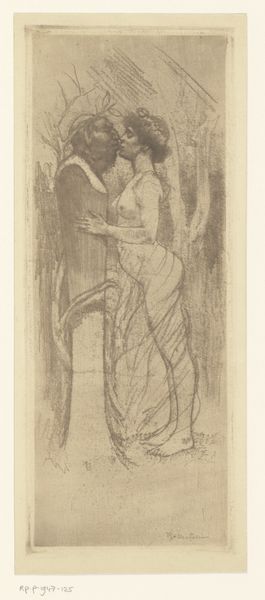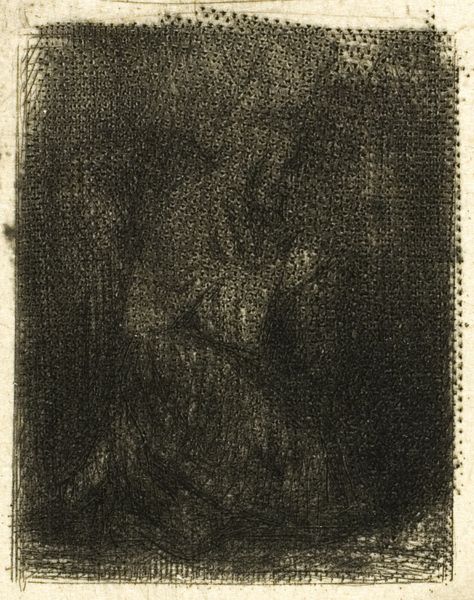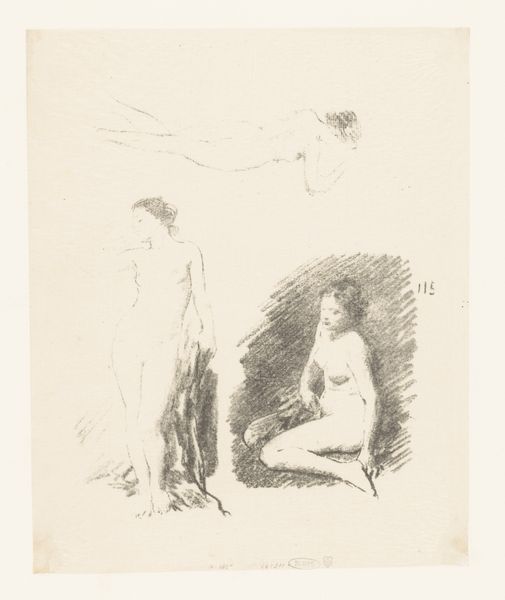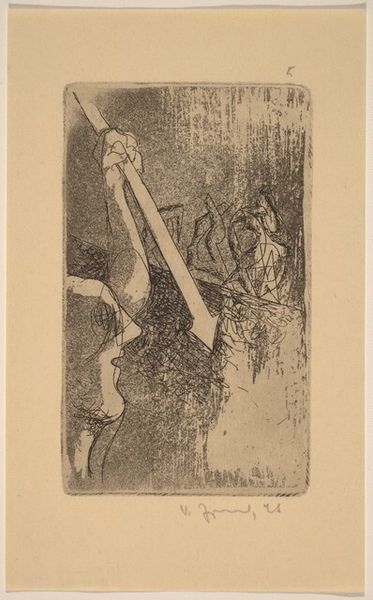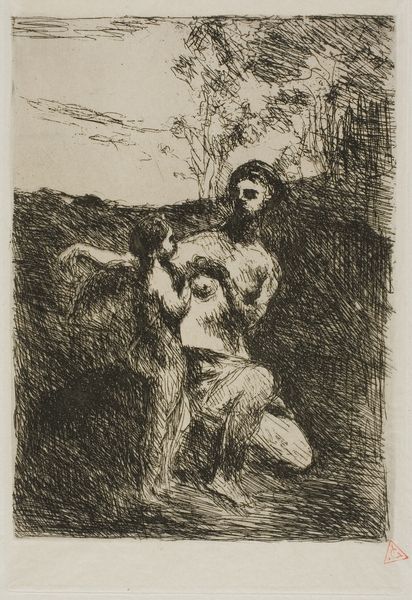
drawing, print, etching, paper, ink
#
drawing
# print
#
etching
#
paper
#
ink
#
france
#
symbolism
#
post-impressionism
#
nude
Dimensions: 133 × 63 mm (image); 144 × 77 mm (plate); 163 × 110 mm (sheet)
Copyright: Public Domain
Curator: Welcome. Before us hangs Odilon Redon's etching, "Bather," created in 1904, currently residing here at The Art Institute of Chicago. Editor: There's a melancholic feel. The monochromatic palette and blurred details create a sense of otherworldliness, almost dreamlike. What do you make of her stooped posture? Curator: Absolutely. The Bather seems suspended between realities, caught in a moment of contemplation, perhaps even shame. Note how Redon employs light and shadow, it’s a clear Symbolist invocation. The figure is not merely bathing; she is undergoing a transformation, perhaps confronting inner demons in this liminal space. Editor: I find it interesting that this image, being an etching, necessitates a rather involved production process. From preparing the plate to the corrosive action of the acid, it's all about the deliberate manipulation of materials to create these hazy, indistinct forms. The line work is surprisingly delicate for such a medium, no? Curator: Indeed. Redon’s command over the etching technique serves his larger symbolic aims. The indistinct quality evokes the ambiguity of emotions and the unseen forces that govern our psychological landscape. Consider how the surrounding dark landscape almost seems to absorb her, questioning whether she exists materially at all. Editor: You know, the paper itself probably played a crucial role. Was it hand-made? Laid paper perhaps? Its texture undoubtedly contributed to the final print, pulling ink in unique ways and furthering the ethereal effect. Also, thinking about circulation of prints versus one-off drawings... It would be fascinating to map its journey through collectors and institutions, tracing changes in taste and value associated with this type of graphic art. Curator: Excellent point about the cultural trajectory. Consider that the Symbolists used prints extensively as their aesthetics allowed circulation and access to broader audiences. The nude figure carries deep resonances from antiquity through academic art traditions. Editor: Seeing that it’s a nude figure... it has certainly been interpreted within evolving social norms, influencing the artwork’s marketability and accessibility. That has greatly impacted what it symbolizes to current museum goers versus when it was conceived. Curator: A perceptive point about its continued interpretation and market influence! The symbols and images he deployed, laden with emotional and cultural memory, still touch upon our innermost feelings even today. Editor: Agreed. By understanding the artwork as a product of labor and materials, embedded in its social context, we reveal something crucial. That Redon did more than make an image of his personal fantasies: his work encapsulates how societal constructs, when processed, can resonate profoundly with individual subjectivities. Curator: Precisely. It encourages us to think beyond its surface appeal into realms of human feeling. Editor: Indeed. It encourages us to think beyond its surface appeal into realms of the cultural forces that surround our most raw individualities.
Comments
No comments
Be the first to comment and join the conversation on the ultimate creative platform.
